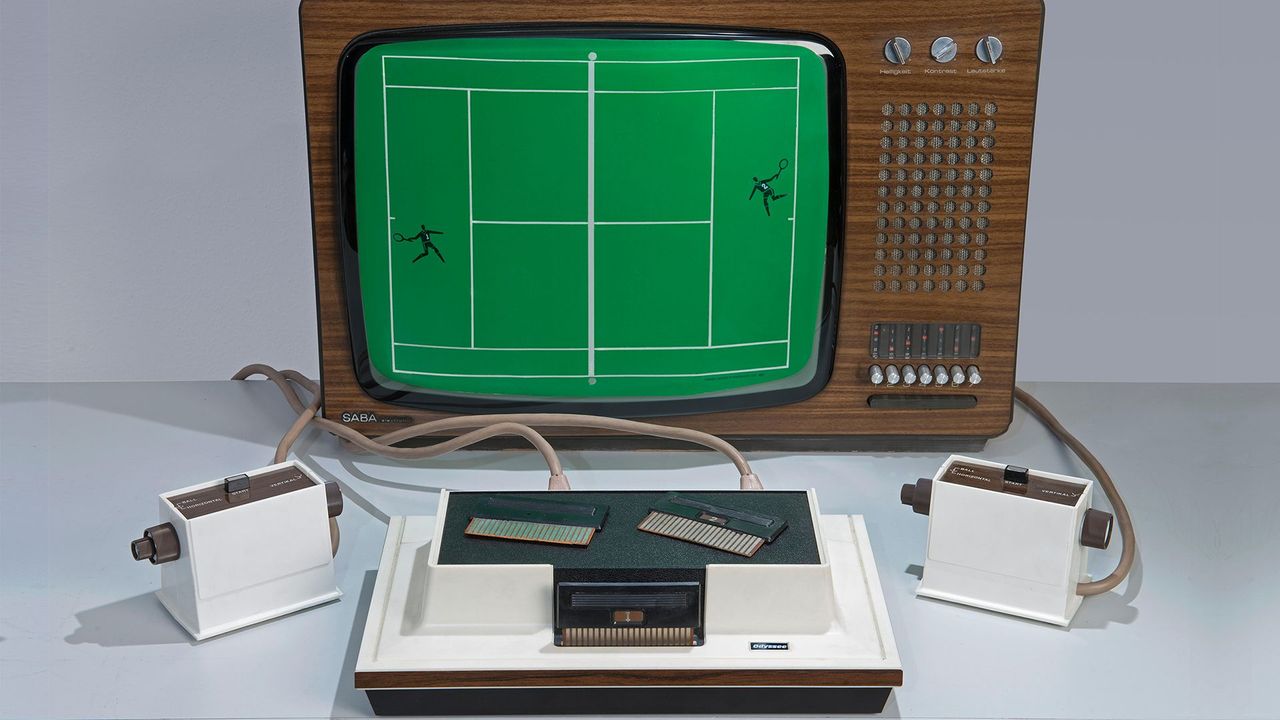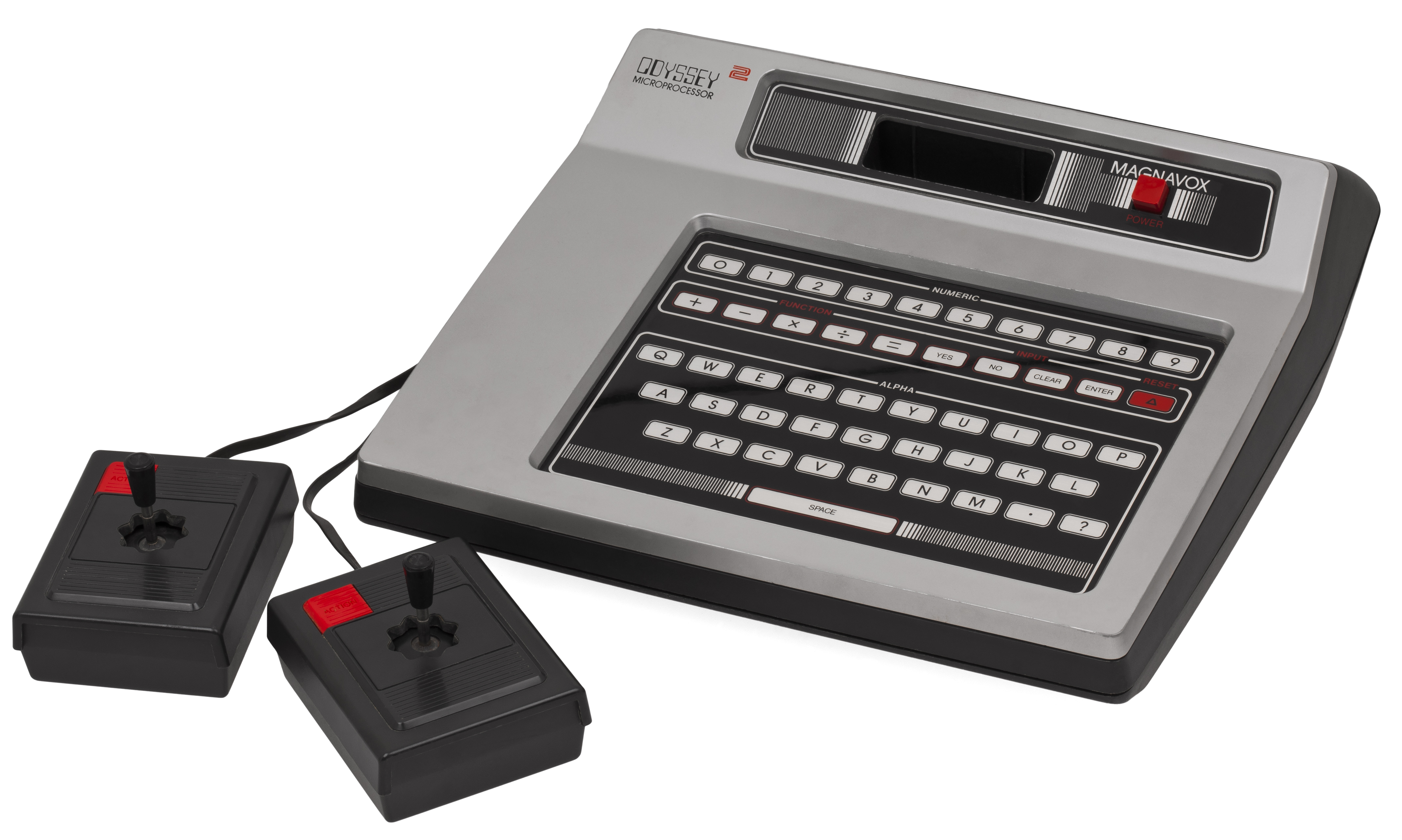Picture this: It’s 1972. Edward Heath is Prime Minister, Britain has just joined the EEC, and your family’s prized possession is a wood-panelled television set that weighs more than 30 kilograms. In living rooms across Britain, families gather around these glowing boxes for their nightly dose of entertainment—sitcoms, news, maybe Top of the Pops if they’re lucky. But what if I told you that across the Atlantic, in some forward-thinking American households, something revolutionary was about to unfold? Something that would transform that passive viewing experience into an interactive playground and ultimately birth a multi-billion pound industry?
Welcome to the untold story of how the Magnavox Odyssey—a humble brown box that looked more like a piece of stereo equipment than a gaming console—quietly launched the home video game revolution.
The Unlikely Pioneer
Our story begins not in Silicon Valley or with some tech prodigy in a garage, but with Ralph H. Baer, a German-Jewish immigrant who fled Nazi Germany as a teenager. By the 1960s, Baer had established himself as a respected engineer at Sanders Associates, a defense contractor in New Hampshire. While his day job involved creating military electronics, his mind wandered to more playful possibilities.
The spark came during a routine business trip in 1966. Sitting in a New York City bus terminal, waiting for his ride, Baer experienced what he later called his “eureka moment.” He pulled out a notepad and scribbled down a revolutionary idea: What if television sets could do more than just receive broadcasts? What if they could be interactive?
This wasn’t just idle daydreaming. Baer had been wrestling with this concept since 1951, when he was tasked with building “the best TV set in the world” at his previous job. Even then, he had suggested adding simple games to television sets, but his boss dismissed the idea as frivolous. Now, fifteen years later, the idea refused to die.
From Concept to “Brown Box”
Back at Sanders Associates, Baer convinced his supervisors to let him explore this television gaming concept. What followed was two years of obsessive tinkering, prototyping, and refinement. Working with fellow engineers Bill Harrison and Bill Rusch, Baer transformed his bus terminal scribbles into working hardware.
The team’s breakthrough came with the development of what they internally called the “Brown Box”—a prototype that could generate simple shapes on a television screen and allow players to control them. The technology was elegantly simple yet revolutionary: the device generated its own video signals that could be fed into any standard television set, effectively turning passive viewing devices into interactive gaming platforms.
But here’s where the story gets fascinating from a technical perspective. The Brown Box didn’t rely on complex computer processors or sophisticated graphics chips—technologies that were either prohibitively expensive or simply didn’t exist in consumer-friendly formats. Instead, Baer’s team used analog circuits and clever engineering to create what we’d recognize today as the first home video game console.
The Magnavox Gamble
Enter Magnavox, a company better known for televisions and radios than ground-breaking technology. In 1971, after shopping his invention to numerous companies (and facing rejection from giants like RCA and Zenith), Baer finally found a willing partner in Magnavox. The company saw potential in this strange device that could transform their television sets into game machines.
But Magnavox made a crucial decision that would both help and hinder the Odyssey’s success. They chose to market the console exclusively through their own dealers, creating the impression that it would only work with Magnavox television sets. This wasn’t true—the Odyssey worked perfectly with any TV—but the marketing confusion limited its potential audience from day one.
The Revolutionary Design Philosophy
When the Magnavox Odyssey finally hit American store shelves in September 1972, it represented a completely new paradigm in home entertainment. Priced at $100 (roughly £380 in today’s money), the console came with a collection of components that seem almost quaint by modern standards but were absolutely revolutionary for their time.
The heart of the system was deceptively simple: a brown plastic box containing analog circuits that could generate basic geometric shapes—squares and lines—on a television screen. No fancy graphics, no digital processors, no sound chips. Just pure, analog electronic wizardry that could create moving images controllable by the user.
The Cartridge Innovation That Changed Everything
Here’s where the Odyssey story becomes truly interesting for us tech enthusiasts. The console used cartridges, but not in the way you might expect. These weren’t sophisticated storage devices containing game code, graphics, or sound data. Instead, they were essentially circuit boards with jumpers—switches that would enable or disable different circuits within the main console.
Think of it this way: the Odyssey contained the circuitry for multiple games built right into the main unit. The cartridges simply acted as keys, unlocking different combinations of circuits to create different gameplay experiences. Cartridge #1 might enable basic ball-and-paddle physics for tennis-style games, while Cartridge #3 might activate different circuit paths for hockey or volleyball variations.
This approach was both ingenious and limiting. It kept costs down and made the system more reliable (fewer complex parts meant fewer things could break), but it also meant that games were relatively simple variations on basic themes. You weren’t getting radically different experiences between cartridges—more like different rule sets applied to the same fundamental mechanics.
The Analog Gaming Experience
Playing the Odyssey was unlike anything that came before or, in many ways, anything that came after. The console generated three basic elements: two player-controlled squares (paddles) and one automatically moving square (the ball). That’s it. No backgrounds, no detailed sprites, no complex animations. Just white squares on a black screen.
But here’s the brilliant part: Baer and his team understood that the magic wasn’t in the technology itself, but in how players would use their imagination to fill in the gaps. The Odyssey came with plastic overlays that could be placed on the television screen to create different playing fields. Suddenly, those simple white squares became hockey players on an ice rink, tanks navigating a battlefield, or tennis players on a court.
The console also included physical game components—dice, poker chips, play money, and game boards—that were meant to be used alongside the on-screen action. It was a hybrid approach that bridged the gap between traditional board games and the emerging world of electronic entertainment.
The Hidden Technical Marvel
From a technical standpoint, the Odyssey was performing feats that wouldn’t be matched by many systems for years to come. The console generated its own composite video signal, synchronized perfectly with the television’s scanning patterns, and maintained stable, flicker-free graphics—all using analog circuitry that had to be precisely calibrated.
The engineering challenge was immense. Modern game consoles rely on powerful digital processors that can calculate complex graphics in real-time. The Odyssey had to achieve interactivity using nothing but analog circuits, resistors, capacitors, and transistors. Every aspect of the gaming experience—ball physics, collision detection, score tracking—had to be implemented using hardware logic rather than software algorithms.
The Market Reality
Despite its revolutionary nature, the Odyssey faced significant challenges in the American marketplace. The limited distribution through Magnavox dealers meant many potential customers never even knew it existed. Those who did encounter it often didn’t understand what it was supposed to do. The concept of “playing games on your television” was so foreign that many people couldn’t grasp the appeal.
The console sold approximately 330,000 units during its production run—respectable for a first-generation product, but hardly the mass-market success that would define later gaming consoles. Interestingly, the Odyssey never officially launched in the UK during its initial run, though some units found their way across the Atlantic through import channels. British consumers wouldn’t get their first taste of home console gaming until later systems arrived in the mid-to-late 1970s.
The Ripple Effects
What makes the Odyssey’s story truly compelling isn’t just its role as the first home console, but how it established patterns and principles that still influence gaming today. The concept of cartridge-based games, the focus on multiplayer experiences, the integration of physical and digital play elements—all of these ideas can be traced back to Baer’s original vision.
More importantly, the Odyssey proved that there was a market for interactive home entertainment. Every console that followed, from the Atari 2600 to the PlayStation 5, owes its existence to the precedent set by that humble brown box in 1972. When home gaming finally arrived in Britain a few years later, it built upon the foundation that Baer had established across the pond.
The Legacy Lives On
Today, as we marvel at ray-traced graphics, 4K displays, and virtual reality experiences, it’s worth remembering that the entire video game industry began with Ralph Baer’s simple idea: television sets could be more than passive entertainment devices. They could be platforms for interaction, creativity, and play.
The Magnavox Odyssey may have been primitive by today’s standards, but it was revolutionary in its time. It took the nascent concept of electronic gaming out of university laboratories and arcade halls and placed it directly in American living rooms. In doing so, it didn’t just create a new product category—it established a new form of entertainment that would eventually rival movies, music, and television itself.
For us in the tech industry, the Odyssey serves as a powerful reminder that innovation often comes from the simplest ideas executed with vision and persistence. Sometimes, the most revolutionary products are the ones that ask not “what can we add?” but “what if we tried something completely different?”
The next time you pick up a game controller or fire up your favourite console, remember Ralph Baer and his Brown Box. Remember that every digital adventure, every online multiplayer match, and every gaming innovation traces its lineage back to a German immigrant’s crazy idea about making television sets more interactive.
The revolution started with three white squares on a black screen. Everything else was just evolution.
What aspect of early gaming history would you like us to explore next? Let us know in the comments below, and don’t forget to follow TF2 Smartphone Solutions for more deep dives into the technologies that shaped our digital world.







